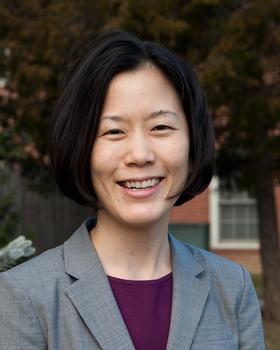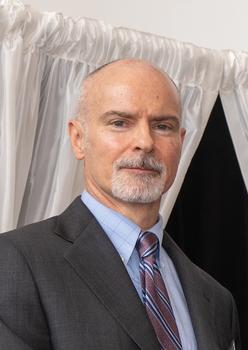It’s a sought-after “sweet spot,” where effective police response to combatting nonviolent crimes earns public approval and builds community goodwill—all within tight budget constraints.

Reaching that intersection is no easy task. That’s why George Mason University researchers Cynthia Lum and Christopher Koper are testing solutions to help local police departments balance limited resources while strengthening public trust.
Lum, director of the Center for Evidence-Based Crime Policy (CEBCP) within the Department of Criminology, Law and Society in George Mason’s College of Humanities and Social Sciences, and Koper, a nationally recognized expert on firearms policy and policing and CEBCP’s Principal Fellow, are leading a new initiative supported by an $839,000 grant from Arnold Ventures. The Washington, D.C.-based nonprofit supports evidence-based policy, research, and advocacy to address systemic challenges where traditional approaches have fallen short, funding initiatives that aim to drive long-term, bipartisan reform.
The project emphasizes practical scalable steps police departments can take, especially when it comes to serious property crime cases, such as burglaries and auto thefts, which sometimes get low priority due to lack of investigative leads, high caseloads, and limited police resources.
“We are testing whether low-cost actions will help victim satisfaction and will possibly help police solve more crimes,” said Lum, a former Baltimore police officer. “If this works, then I think many police agencies across the country, especially those who don’t have a lot of resources, but who want to try to do something, will have an accessible approach that can lead to real improvements.”
Most crimes in the United States go unsolved. Violent crimes have higher rates of clearance, with homicide cases ranking highest at 58%. Nonviolent crimes—which are much greater in number—are solved at much lower rates, frustrating many victims and eroding trust in law enforcement.

To address that, the agencies participating in the George Mason three-year pilot will send officers to personally follow-up on stalled, low-priority cases that would not normally receive extensive investigation. If this uncovers potential new leads, it may increase the likelihood of solving these cases. Further, by demonstrating continued engagement, it is hoped that the follow-ups will improve victim satisfaction with police services and boost community views of the police. Lum and Koper will be measuring both outcomes.
“At the minimum, it gets officers back into the community, visibly showing their commitment to solving crimes and positively engaging with people,” Lum said, adding that this project will provide graduate students on the research team opportunity to learn how to carry out program evaluations and field experiments.
Lum and Koper are currently partnering with two police departments, one in Northern Virginia and the other in Maryland. While setting up logistics, such as data sharing and officer training, they are both optimistic about the possibilities.
“We’re trying to move the needle with a modest, low-cost change to investigative procedures,” Koper said. “That additional follow-up by an officer could make a difference.”
Should their research prove effective, they plan to disseminate the model and findings to law enforcement agencies nationwide.
“I think of it as helping police agencies balance the realities they face,” Koper said. “They want to solve more cases and earn a higher level of public confidence and trust. But they also face limits on how intensively they can investigate all cases.”
Related News
- June 18, 2025
- June 16, 2025
- June 6, 2025
- George Mason civil engineering students are helping local communities improve their flood resilienceMay 8, 2025
- April 2, 2025
